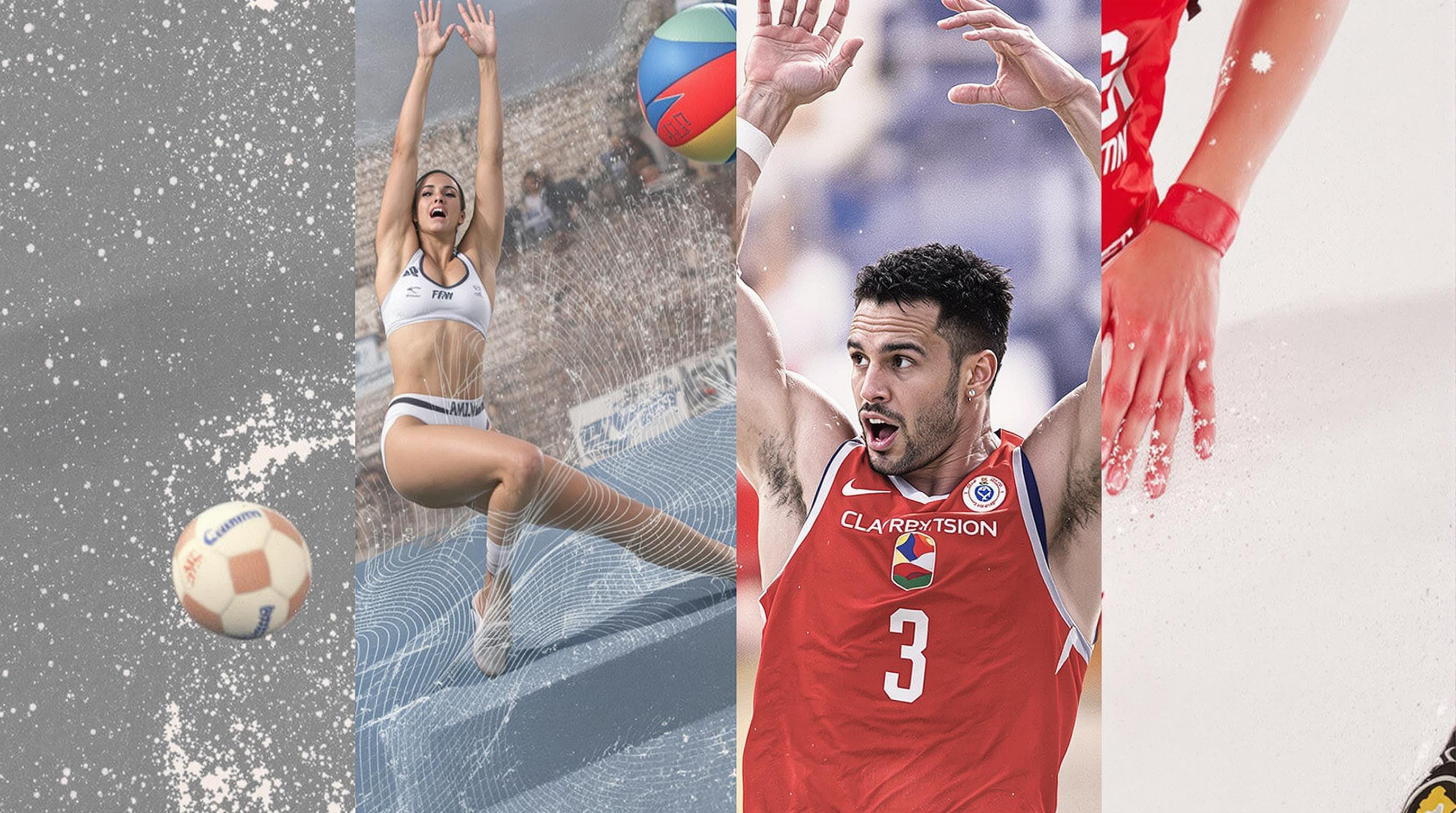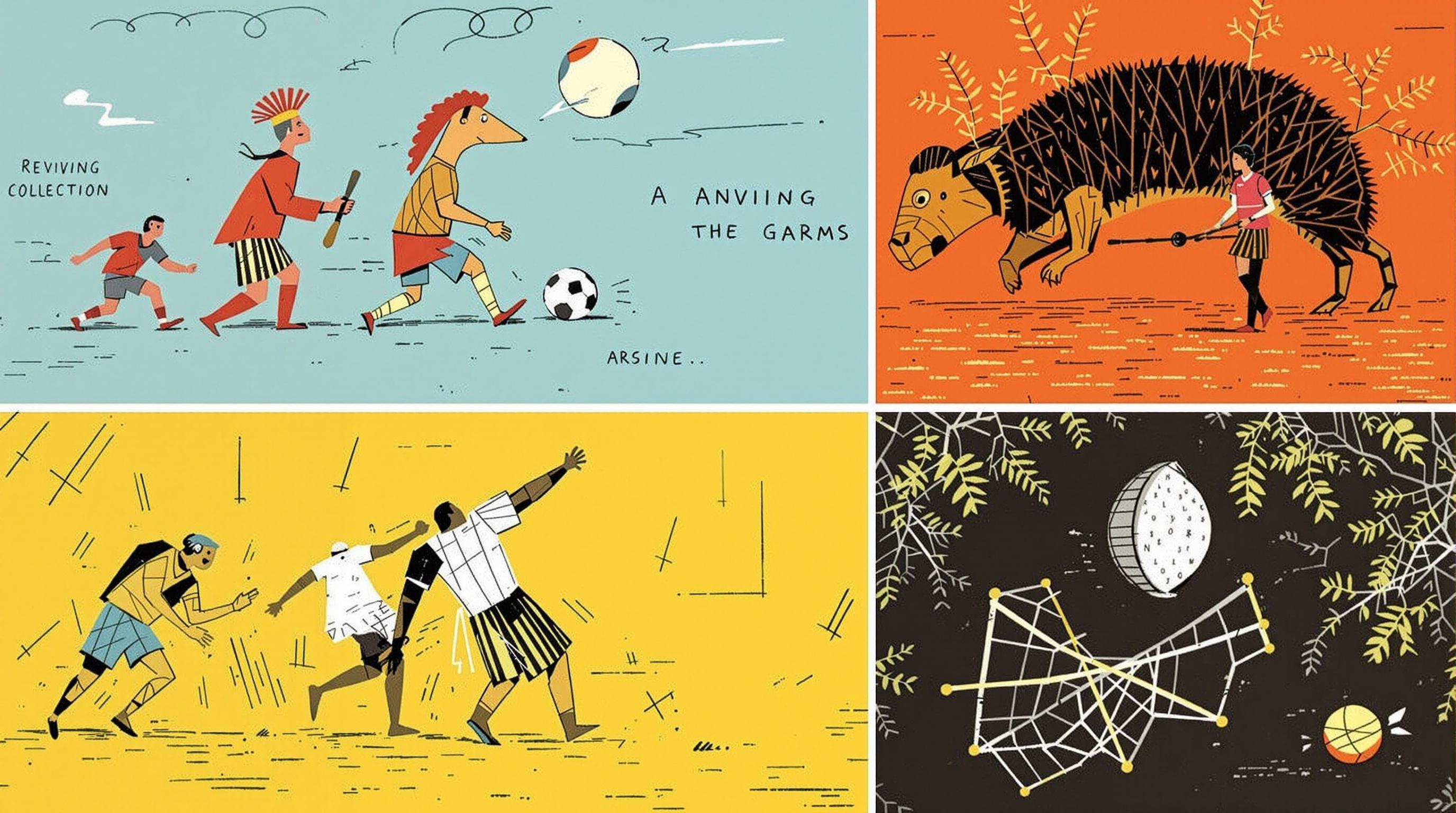Related Articles
- Cultural Collisions: How Colonialism and Conquest Transformed Games and Their Rules Across Continents
- The Eccentric Anomalies of Game Etiquette: Odd House Rules That Defied Generations
- Unveiling the Unconventional: The Role of Secret Societies in Shaping Game Regulations Across Time
- Revisiting the Cultural Phenomenon: How Iconic Championships Influenced Fashion Trends on and off the Field
- Revisiting the Aftermath: How Championship Wins Shape Community Identity and Local Economies
- The Role of Unexpected Weather Events in Shaping Championship Outcomes: A Tidal Wave of Influence
Reimagining Competition: The Surprising Intersection of Artistry and Athleticism in Emerging Sports Trends
Reimagining Competition: The Surprising Intersection of Artistry and Athleticism in Emerging Sports Trends
In a world where the lines between art and sport are becoming increasingly blurred, emerging sports trends are reimagining competition through a lens of creativity and skill. As we delve into the intersection of artistry and athleticism, we’ll explore how these new trends are reshaping not only how we view sports but also how we participate in and enjoy them.
The New Wave of Sports
It’s not just the classics like basketball, soccer, or track that capture our imagination anymore. Emerging sports trends are infusing innovation and artistry into athleticism. From the flamboyance of breakdancing making its Olympic debut to the captivating visuals of drone racing, these activities are echoing with an ethereal beauty that sets them apart.
Breakdancing: A Dance of Intensity
Slated to appear in the 2024 Paris Olympics, breakdancing—now rebranded as breaking—is a dazzling display of athletic prowess, artistic expression, and cultural significance. This sport requires immense physicality akin to traditional sports but also, as seen in the competitive landscape, a deep sense of rhythm and style. Competitors often battle in a circular setting called a cypher, showcasing their moves backed by music, lights, and an audience enthralled by the performance.
Dancing with Drones: Racing to the Future
Who would have thought that flying drones would capture the hearts of sports enthusiasts? Drone racing is a high-speed competition where pilots control drones through intricate obstacle courses. The League of Extraordinary Drone Pilots, a popular series, showcases this hobby-turned-sport which combines technical savvy with artistic flair as pilots account for speed, maneuverability, and engaging visual spectacles. According to a report by the Drone Racing League, viewership has increased by over 300% in the past year alone, showing that this sport is not only flying high but gaining ground in popularity.
Artistry in Action: Gymnastics and Parkour
Let’s pivot from flying drones to flipping bodies. Gymnastics has long been seen as an artistic sport and is often described as a “graceful battle.” Whether it’s on the balance beam or the pommel horse, gymnastics blends athleticism with artistry, requiring athletes to execute routines that are both technically proficient and visually stunning. According to the U.S. Gymnastics Federation, participation in gymnastics has grown by 20% in the last decade, reflecting a renewed interest.
Then there’s parkour, the urban sport where athletes—known as traceurs—navigate obstacles in their environment in creative and efficient ways. The artistic expression in parkour comes from how an individual interprets and interacts with their surroundings. Missy is a 24-year-old parkour enthusiast who proudly states, “It’s not just about getting from point A to B; it’s about how you do it!” Her philosophy resonates with many others engaged in this fascinating blend of art and athletics.
The Public Perception Shift
So, why is this shift towards artistry in sports important? Research indicates that the integration of creativity within athleticism is not only energizing the competition but also attracting new audiences. A Nielsen survey found that about 72% of millennials are interested in participating in less traditional sports—indicating a need for a more engaging, dynamic interaction as spectators. This means that variant sports trends are key to keeping audiences engaged in a rapidly evolving entertainment landscape.
The Economics of Emerging Sports
With the rise of these new trends comes an economic boom. Millions in sponsorships and endorsements are pouring into these often underrepresented arenas. For example, companies like Red Bull and Monster Energy have effectively turned emerging sports into lucrative business opportunities. The Red Bull-based Drone Racing League has gained sponsorship deals worth millions, showcasing how blending art with competition attracts investment.
Case Study: The Impact of the X Games
A great example of how new trends have shifted public perception is the X Games, which first aired in 1995. From skateboarding and snowboarding to BMX and freestyle motocross, the X Games not only introduced these sports to the mainstream but also captivated audiences with their artistic elements. Daring tricks are not just about achieving physical feats but also about how visually appealing they look when performed. According to ESPN, the X Games generated more than 180 million viewers worldwide in recent years, proving that the fusion of art and athleticism garners attention.
How Emerging Sports Cultivate Community
Emerging sports also foster communities, transcending the traditional competitive spirit. Take the example of Ultimate Frisbee—this sport thrives on its inclusionary themes, encouraging players of all skill levels to join in, celebrate, and create. The bonds formed through these shared experiences build a sense of belonging and camaraderie seldom found in traditional sports. A survey by USA Ultimate found that 80% of participants report friendships formed through their involvement in Ultimate Frisbee, exposing a strong community identity within this artistic sport.
Breaking Away from Tradition
But let’s be real: the path to embracing these new trends isn’t always smooth. There are those who argue that the “artistic” elements should not hamper the competitive nature of sports. As renowned sports commentator Mike Greenberg posited, “There’s a fine line between sport and performance.” However, what is clear is that emerging sports are adept at breaking down barriers, inviting fresh perspectives, and engaging less traditionally inclined audiences.
The Role of Technology
Technology plays an essential role in advancing these newly reimagined sports. Advances in performance tracking through wearable technology, augmented reality training, and social media engagement have revolutionized how athletes prepare and compete. For instance, the introduction of VR training in sports like skateboarding and parkour allows athletes to fine-tune their artistic expression while mitigating injury risks.
The Bottom Line: What’s Next?
As we peer into the future of athleticism and art, it’s clear that the landscape will continue to evolve. Athletes are gaining the ability to be regarded not just as competitors but as artists within their chosen fields. With the world now more interconnected than ever, incorporating diverse artistic expressions into sports can bridge cultural divides, inspire innovation, and promote inclusivity.
Why We Should Embrace Change
If we embrace this competition-adjacent artistry, we may find that exploring the unexpected creates deeper connections to the sports we love. As audiences, we ultimately stand to benefit from vibrant new formats and artistic visions. So, why not dive in headfirst and support these emerging trends? They break the expected norms and promise to deliver the exhilarating experiences we crave.
Conclusion: A New Paradigm
The trends we’ve examined exemplify the intriguing intersection of artistry and athleticism. By reimagining competition in the world of sports, we breathe life into innovative formats capable of engaging wider audiences, thereby reinforcing sports’ role as an essential aspect of culture. As we continue this journey of exploration, don’t be surprised to find more creativity spilling onto the playing field—and perhaps even redefine what it truly means to compete.
Whether you’re 16 or 70, ready your imagination for what’s next: sports as we know them are just beginning to transform. Let's keep our eyes peeled for what these new age athletes have in store! After all, the future looks colorful and exciting.




